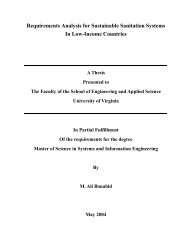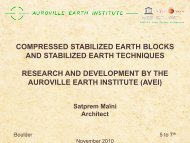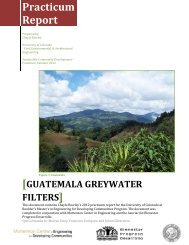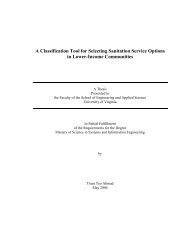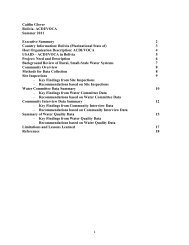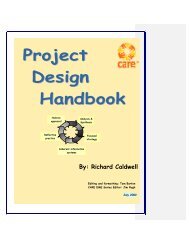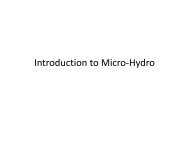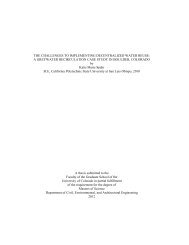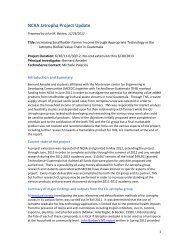SCEBs - University of Colorado Boulder
SCEBs - University of Colorado Boulder
SCEBs - University of Colorado Boulder
Create successful ePaper yourself
Turn your PDF publications into a flip-book with our unique Google optimized e-Paper software.
The equation <strong>of</strong> the trend-line was used to calculate the strength for a prism with<br />
an aspect ratio <strong>of</strong> 2 as follows:<br />
# <strong>of</strong> Stacked<br />
Blocks in Prism<br />
(height = 3.625 in)<br />
psi<br />
0.<br />
887<br />
0.<br />
887<br />
y 565.<br />
85<br />
x 565.<br />
85<br />
2 306.<br />
0<br />
Aspect<br />
Ratio<br />
Test Data<br />
UCS [psi]<br />
Calculated<br />
UCS from<br />
Trend-line [psi]<br />
Prism UCS value/<br />
UCS value for an<br />
aspect ratio <strong>of</strong> 2<br />
1 0.5 1112.0 1014.4 3.3<br />
2 1.0 506.4 548.5 1.8<br />
3 1.6 328.9 382.8 1.3<br />
4 2.1 300.5 296.6 1.0<br />
5 2.6 276.2 243.3 0.8<br />
Table 5.1: Aspect Ratio Results on UCS<br />
The last column in Table 5.1 gives the values <strong>of</strong> the ratio between each prism‟s<br />
UCS and the UCS <strong>of</strong> a prism with an aspect ratio <strong>of</strong> 2.0. These factors can be used to<br />
infer the UCS <strong>of</strong> a SCEB unit in the field from testing a single block in the laboratory.<br />
5.2.1.2. Young‟s Modulus (E) vs. Aspect Ratio<br />
A similar analysis was performed to analyze the effect <strong>of</strong> the aspect ratio on the<br />
prism‟s Young Modulus (E). The results presented in Table 5.2 and Figure 5.19 show a<br />
reduction in the prism‟s E value as the aspect ratio increases. Again, a non-linear trend-<br />
line was applied to the test results.<br />
70



